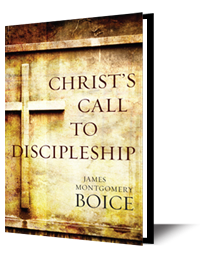Jesus' Teaching on Divorce - Part Two
Theme: Marriage and Divorce
In this week's lesson we learn about Jesus' teachings on divorce.
SCRIPTURE
Matthew 19:4-9
He answered, “Have you not read that he who created them from the beginning made them male and female, and said, Therefore a man shall leave his father and his mother and hold fast to his wife, and the two shall become one flesh’? So they are no longer two but one flesh. What therefore God has joined together, let not man separate.” They said to him, “Why then did Moses command one to give a certificate of divorce and to send her away?” He said to them, “Because of your hardness of heart Moses allowed you to divorce your wives, but from the beginning it was not so. And I say to you: whoever divorces his wife, except for sexual immorality, and marries another, commits adultery.”
LESSONS
Jesus did not answer the Pharisees’ question directly at first. Later he does (in verse 9). But here, instead of allowing the matter to be debated on their level—they were asking about the minimal grounds for divorce—Jesus raised the discussion to the level of God’s original intention in marriage, directing his questioners to the first and second chapters of the Bible where the institution of the marriage relationship is found.
The first text Jesus cited was Genesis 1:27. "He answered, 'Have you not read that he who created them from the beginning made them male and female'" (v. 4). The implication is that God instituted marriage by the creation of man in two genders, male and female, and that the woman was created for the man just as, in a corresponding way, the man was given to the women.
The second text was Genesis 2:24. This is part of a longer passage that reads: “Then the Lord God said, 'It is not good that the man should be alone; I will make him a helper fit for him.' . . .So the Lord God caused a deep sleep to fall upon the man, and while he slept took one of his ribs and closed up its place with flesh. And the rib that the Lord God had taken from the man he made into a woman and brought her to the man. Then the man said,
'This at last is bone of my bones
and flesh of my flesh;
she shall be called Woman,
because she was taken out of Man.'
Therefore a man shall leave his father and his mother and hold fast to his wife, and they shall become one flesh. And the man and his wife were both naked and were not ashamed."
(Gen. 2:18, 21-25).
These words indicate that marriage was instituted by God for man’s well being and that the union that makes a man and a woman one flesh is to be permanent throughout both their lives—“‘til death us do part,” as one form of the marriage service states it. Therefore, Jesus was standing against the common lax divorce practices of his day and for Scripture when he taught that marriage was to be a permanent institution.
As I read Matthew’s account, I suspect that the Pharisees anticipated an answer like this because they were ready at once with a follow up question. “Why then,” they asked, “did Moses command one to give a certificate of divorce and to send her away?” (v. 7). They were talking about Deuteronomy 24:1-4, of course, and what they were suggesting is that Jesus must be wrong in his interpretation of Genesis 1 and 2, since later in the law, in Deuteronomy, Moses “commanded” divorce.
They were not reading their proof text correctly. They were reading it like this: “If a man marries a wife and she displeases him (for some reason), he shall write her a bill of divorce and send her away.” But that is not what Moses said. Moses did not command divorce; he only recognized that it was happening and tried to regulate it. As Jesus says, he permitted divorce because of the hardness of the people’s hearts. What the text actually says is something like this: “If a man marries a wife and she does not find favor in his eyes. . .and he writes her a bill of divorce and sends her away. . .and she marries another man. . .and her second husband also writes her a bill of divorce and sends her away, then the first husband must not marry her again.” The text says nothing about a divorce being allowed, only about the sin of remarriage after the woman has been joined to another man.
So far so good. But there is more to be discussed.
STUDY QUESTIONS
- What are the implications of the Old Testament text Jesus used?
- How did the Pharisees inaccurately interpret Deuteronomy 24: 1-4?
OBSERVATION
- Jesus often refers to Old Testament texts in his discussions with the Pharisees.
- Login to post comments


















